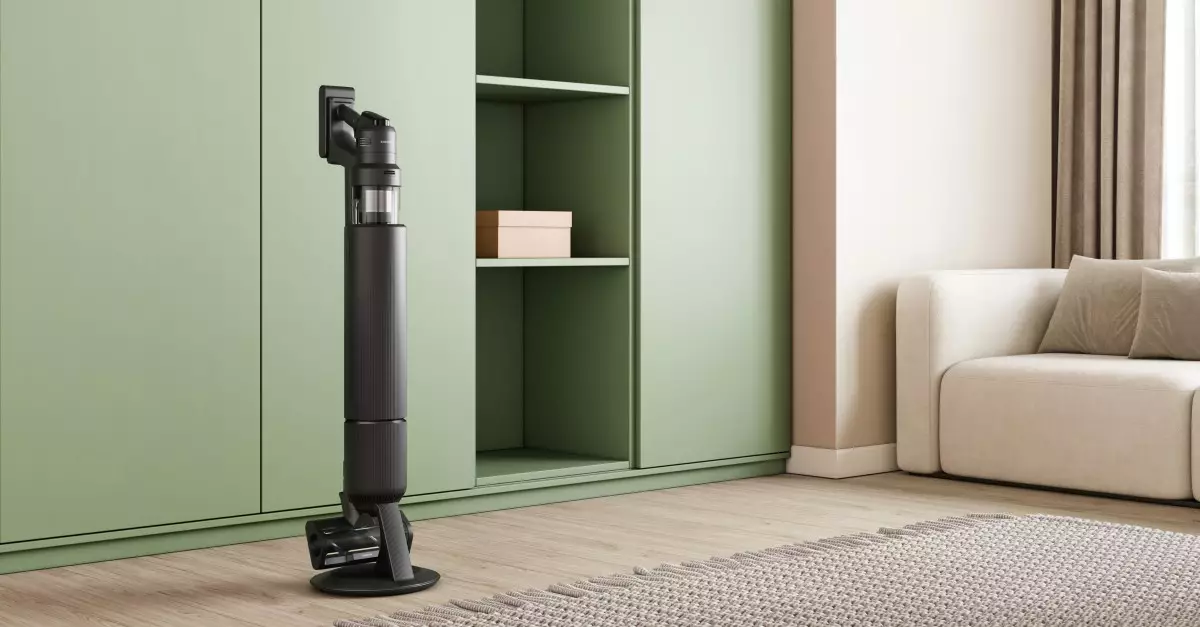In an ever-evolving digital landscape, household appliances are no longer just about functionality; they are becoming intricate parts of our smart home ecosystems. Samsung is leading this charge with its latest releases that bridge the gap between utility and connected technology. Their Bespoke Jet AI vacuum and the Bespoke AI Laundry Vented Combo washer/dryer are prime examples of how appliances are adapting to meet the demands of modern lifestyles. As consumers become more reliant on technology to streamline their daily routines, these innovations reflect an impressive marriage of design and convenience.
A Touchscreen Vacuum Cleaner? Yes, Please!
At first glance, the idea of a touchscreen vacuum may seem excessive. Yet, the Bespoke Jet AI Vacuum ($1,099) redefines expectations. Samsung has integrated an LCD display that serves as a control center for managing cleaning functions, but it takes things a step further by allowing notifications for incoming calls and texts. This is particularly advantageous for those immersed in chores who might miss out on important notifications. The vacuum’s impressive specifications, including a 400AW suction power and a 100-minute battery life, complement its technological enhancements, making it both efficient and smart.
What stands out is Samsung’s ability to meld functionality with modern communication practices. With a control panel that acknowledges our need for constant connectivity, this product appeals to a demographic that relishes multitasking. Cleaning while staying in the loop? It’s a dream come true for busy households. However, even as these features enhance user experience, one must question whether the clutter of screens and notifications might eventually detract from the peace associated with traditional chores.
Smart Laundry: More Than Just Clean Clothes
Similarly intriguing is Samsung’s Bespoke AI Laundry Vented Combo washer/dryer, priced at $3,099. Not only does this appliance provide the convenience of an integrated call-answering feature via its 7-inch LCD screen, but it also automates detergent dispensing and opens its door once the cycle is complete. This array of features signifies a departure from conventional role expectations tied to washing and drying clothes; they have become almost comically sophisticated devices catering to user convenience.
Yet, with every innovation comes a caveat. One has to consider the potential complications that accompany added technology—software malfunctions, updates gone awry, or inadvertent damage to the display. For many consumers, these items represent a significant financial investment, and the thought of relying on a touchscreen interface on an appliance sparks a justified concern about the longevity and reliability of such tech.
Integrating with Smart Home Ecosystems
As household technology becomes seamlessly integrated, Samsung is pioneering what it terms “AI Home,” a creative initiative designed to embed smart interfaces throughout the home. Their products, including the flagship Family Hub refrigerator, harness a 21.5-inch or 32-inch screen to deliver comprehensive connectivity—from recipe guidance to smart home controls. Imagine pulling up a recipe from Samsung’s Food app, sending instructions to your oven, and accessing all this information hands-free while engaged in meal preparation. The potential is unlimited and points to a future where digital integration is as essential as electricity.
However, while these advances promise efficiency and time savings, a counterpoint emerges—could this movement toward screen integration be over-saturating our living spaces with technology? The fear lies not only in the obsolescence of technology but also in the unanticipated emergence of ad-driven content that may turn our homes into promotional platforms, akin to what has already transpired with many smart displays by other brands. The question remains: at what point does convenience become a burden?
The Future: Balancing Innovation with Simplicity
Samsung’s innovation for smart home appliances reflects a profound transformation in how we view everyday chores. While it’s comfortable to admire the convenience offered by devices that enable seamless communication and multitasking, this innovation prompts a necessary discourse on reliance on technology. The beauty of these newly designed appliances lies in their potential to enhance everyday efficiency, but the concern is whether this continual push for more will overshadow important, less technological rituals in our daily lives.
As we delve deeper into this digital era, a balance must be struck between embracing convenient advancements and preserving the simplicity that defines countless household tasks. The future may be bright for smart technology in the home, but it remains crucial to remember the essence of what home should feel like—safe, nurturing, and uncomplicated.


Leave a Reply